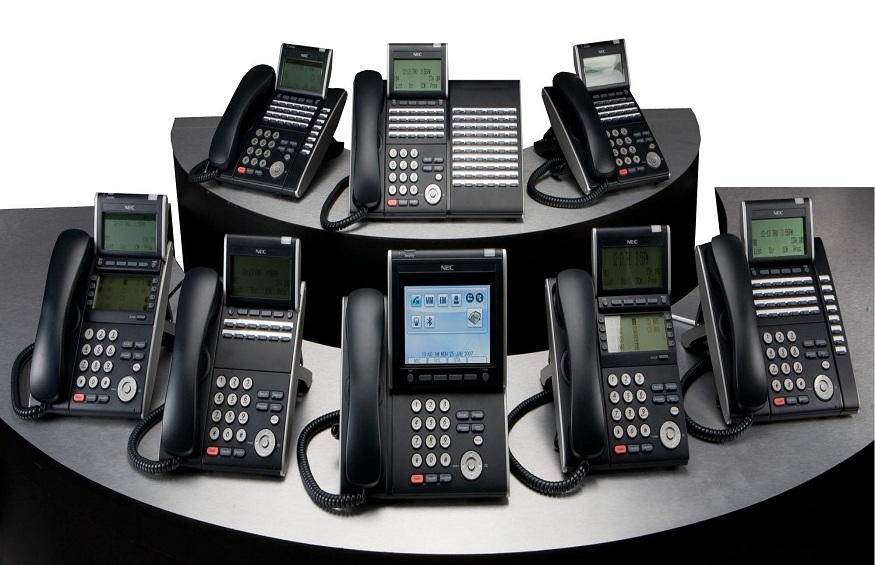To understand what a VOIP phone system ( PBX ) is, it is important to know the different technical terms related to phone systems and the different technologies involved. This text is intended for business managers wishing to better understand this technology. If you are an IT specialist, you are probably already familiar with most of these terms.
Traditionally, telephone lines were exclusively provided via the public switched telephone network, known in the profession by the acronym: PSTN .
These are the type of phone lines that most business customers are familiar with. These phone lines were also the only type of phone lines available for the residential market until the birth of the VoIP protocol around 2004.
The PSTN is built on analog signals and uses circuit validated protocols for voice communications. In layman’s terms, this means that each phone call travels along copper phone lines, being tied to the phone provider’s equipment.
With the PSTN , telephone calls travel over their own network, which is used exclusively for telephone calls and fax transmission. You can think of the PSTN as an analog version of the Internet with the unique role of transmitting telephone calls.
These traditional phone lines have certain limitations. For example, if you need to add lines, a technician must come on site and physically connect an additional telephone line. This phone line should be connected to your VOIP phone system (PBX) if your company has one. This usually requires the intervention of another technician working for your telephone system supplier.
Another significant limitation of traditional phone lines is that your phone number itself is tied to a geographic location. In some cases, if you want to relocate your business, your original phone number may not be available in the new location, and you will have to get a new phone number and forward the old number if possible.
While traditional phone lines were, and still are, a reliable method of transmitting phone calls, the invention of the Internet quickly affected the industry.
The Internet is a digital network and it quickly became apparent that this network could easily be used to transmit telephone calls as well.
This gave birth to the VoIP protocol . VoIP is the abbreviation of the English words: Voice over Internet Protocol . This technology is also known by other names: IP telephone, IP telephony, high-bandwidth telephony, Internet telephony, etc. VoIP is the digital protocol that allows businesses to transmit telephone calls directly over the Internet, instead of using the PSTN.
Initially, VoIP was used almost exclusively to carry phone calls to businesses and route them to an on-premises phone system (PBX) that provided all other functionality to it.
This was a significant improvement as it allowed businesses to easily relocate without losing their phone number. In most cases, VoIP phone lines were connected to existing traditional phone systems or on-premises VOIP phone systems. These systems were, and still are, very expensive. A typical installation, complete with all the features, can cost anywhere from a few thousand dollars for a small business to hundreds of thousands of dollars for a large enterprise.
These telephone systems, also known as PBX (Private Branch Exchange System), provided all the telephone functionality that you are probably already familiar with. You can think of these phone systems as dedicated electronic computers with a unique role: to provide the functionality of a phone system and to transmit phone calls within a company. Most IP phone system vendors at that time used their own protocol to control phone calls, which allowed them to retain control of the PBX market.
Engineers quickly realized that computers could be used to replace dedicated (on-site) telephone systems. Since depending on old phone systems used to cost a fortune, why not program a phone system and run it on computers instead of expensive specialized equipment?
Open source protocols (open code, freely available to everyone) were invented exactly to accomplish this goal.
The SIP (Session Initiation Protocol) and RTP (Real-time Transport Protocol) protocols were invented to transmit telephone calls and the voice or sound content of those calls via Internet or any other network, without having to rely on proprietary protocols.
These protocols were first adopted by cellular networks before quickly spreading to telephone systems.
These new technologies have enabled the creation of a new generation of software-based telephone systems, usually installed on a computer or server (another type of computer used by businesses) on site.
Since computers were relatively inexpensive compared to traditional telephone systems, and could be used for activities other than managing the business telephone system, significant savings were realized by business owners. They were suddenly able to build an affordable and powerful phone system with just one computer and software. A downside to this solution was that companies needed someone with a good understanding of computers and computer networks in order to support this type of solution.
Still, it was a great solution for larger companies since they already had IT specialist departments that could support these new phone systems. The benefits were not as obvious for small businesses with limited access to IT specialists, since more often than not they had to seek help from an outside company, thus increasing their expenses.
It is important to understand that the IP phones in this type of system connect directly to a server (which provides all phone system functionality) via the company’s computer network also known as the local area network or LAN. This network is very similar to the Internet but is dedicated to private corporate use.
This led to the latest, and arguably the most important innovation, the birth of hosted PBX systems .
IP/VoIP phone service providers already managed their own servers to route phone lines and calls, and they quickly realized that they could easily install (in technical terms host) phone system software directly on their own servers. These servers are usually located in data centers. These are specialized buildings where servers can be installed (hosted) and easily connected to the Internet backbone and various phone line providers.
In this way, a company’s IP phones could connect directly to the VoIP provider’s servers. The benefits were many for business owners. They could now take advantage of the full functionality of the phone system without even having to buy servers or computers! It also allowed small businesses to enjoy the same benefits that large enterprises were accustomed to since the VoIP provider could take care of the technical support, eliminating the need for the services of IT or network specialists.
However, there was a downside. All open source software PBX systems were originally designed to be installed on-premises and to meet the needs of a single company.
VoIP providers could hardly buy a server for each of their customers. It is for this reason that the majority of VoIP providers have decided to take advantage of virtualization and the cloud (Cloud) to solve this dilemma and achieve significant cost savings.
Instead of using real physical servers for each client, they used virtualization. This is a technology that creates virtual servers.


